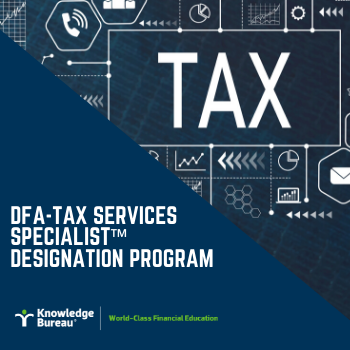Last updated: January 28 2020
New Journalism Tax Credit: No Lines or Forms Released to Claim it Yet

Paula Baker
A new maximum non-refundable tax credit of $13,750 per eligible employee is available starting in 2019 for Qualified Canadian Journalism Organizations. The 25% refundable credit will apply to qualifying labour expenditures of up to $55,000 if they are incurred in the tax year beginning on or after January 1, 2019. The trouble is that there is no line on the tax forms for the credit and the required schedules won’t be available until May. Still, the claim must be done on time. Here’s what you need to know:
This support for Canadian news outlets was announced in the 2019 federal budget with the intention of supporting Qualified Canadian Journalism Organizations. The object is to help qualified organizations evolve as they move into the digital world. The qualified journalism tax credit will not qualify if the organization is carrying on a broadcasting undertaking.
A new 25% refundable credit will be available for salaries and wages of eligible news organizations for journalists. The organizations must be Canadian, must be published in Canada, must primarily engage in the production of original news and at least 75% of the directors must be Canadian citizens. They must be structured as corporations, partnerships or trusts and follow the specific requirements to be recognized as qualifying organizations.
The required set up for each one of these entities (per CRA sections 2.9-2.18) is as follows:
Corporations:
(2.10)- The corporation must be incorporated under the laws of Canada, a province, or a territory.
(2.11)- The corporation must be resident in Canada.
(2.12)- It is also necessary that the chairperson (or other presiding officer) and at least 75% of the directors or other similar officers be Canadian citizens.
Partnerships:
(2.13)-The partnership must be formed under the laws of a province or territory.
(2.14)- In the case of an organization that is a partnership, there are criteria related to the holding of partnership interest. In particular, individuals who are citizens of Canada, or persons  (e.g. a corporation) or partnerships described in any subparagraphs (a)(i) to (iii) of the definition of QCJO (qualified Canadian journalism organization) in subsection 248(1), must hold interests in the partnership that:
(e.g. a corporation) or partnerships described in any subparagraphs (a)(i) to (iii) of the definition of QCJO (qualified Canadian journalism organization) in subsection 248(1), must hold interests in the partnership that:
a) Represent in value at least 75% of the total value of the partnership property.
b) Result in at least 75% of each income or loss of the partnership from any source being included in the determination of their incomes.
Trusts:
(2.17)- The trust must be formed under the laws of a province or territory and be resident in Canada.
(2.18)- Additionally, if one or more of the beneficiaries under the trust is a person (e.g. individual or corporation) or partnership, at least 75% of the fair market value of all interests as a beneficiary under the trust must be held by individuals who are citizens of Canada. Or by a corporation, a partnership, or a trust as described in paragraph (a) of the definition of QCJO in subsection 248(1) of the act.
To qualify you must employ two or more employees and these employees must work an average of 26 hours per week with a reasonable expectation of being employed for 40 consecutive weeks. The total
Employees who qualify must spend at least 75% of their time engaged in the production of original news content. This includes researching, collecting information, verifying facts, photographing, writing, editing, designing and otherwise preparing content.
This refundable credit for salaries or wages has an annual cap of $55,000.00 per eligible employee and there can be no funding received from the Aid to Publishers component under the Canada Periodical Fund (a financial assistance program available to print magazines, non-daily newspapers and digital periodicals) and must be reduced by any amount received from government funding. This credit has a maximum credit of $13,750 per eligible employee.
To apply to become a designated Qualified Canadian Journalism Organization you must fill out form T625 and submit this to CRA. As of now, there are no forms available to make this claim for the T2, T3 or partnership returns. Returns must be filed on time and amendments can be made when the forms become available. Per CRA, the new form will be a Schedule 58, available in May 2020, and once it is available it will designate a line number on the return to allow for this claim.
Paula Baker, DFA-Tax Services Specialist™, has worked in the tax filing industry for the past 15 years. She shares, “Through Knowledge Bureau, I have completed all of the courses to achieve my DFA-Tax Services Specialist™ Designation. This designation has allowed me to become an instructor for the Proprietorship course and to continue to run a successful home-based tax business. I have worked in the industry for the past 15 years and enjoy working with my clients as well as the students. Knowledge Bureau has proven to be an excellent source of information through courses and seminars that are available and it has enabled me to stay informed and up to date on the constant changes that we face with the CRA.”

COPYRIGHT OWNED BY KNOWLEDGE BUREAU INC., 2020.
UNAUTHORIZED REPRODUCTION, IN WHOLE OR IN PART, IS PROHIBITED.
